
Amateur astronomer, owns a telescope. This is a side blog to satiate my science-y cravings! I haven't yet mustered the courage to put up my personal astro-stuff here. Main blog : @an-abyss-called-life
212 posts
Latest Posts by starry-shores - Page 2
I’ve just made a behavioral study on birds (aka. I’ve fed bread to pigeons and crows) and I’d like to conserve the results for posterity:
Pigeons can and will fight each other for even the smallest crumb of bread
When a pigeon picked up a bread crumb and other pigeons are nearby it will spread its wings to ensure the other pigeons can’t get close enough to steal the crumb™
The other , bread stealing pigeons might also spread their wings to make sure that no pigeon can steal the breadcrumb before them
They will steal it straight from another pigeons beak
Pigeons have no manners
They WILL fly at you and hover around your head once they realized you’re the one throwing the crumbs
They have no concept of personal space.
Crows on the other hand are civilized.
They will try to get to the crumb first but when another crow has reached the crumb before them they will accept this and leave them be
However if a pigeon reaches the crumb first they WILL go absolutely feral and peck the pigeon until it surrenders the crumb
Pigeons are reasonably scared of crows and won’t try to steal crumbs from their very pointy stabby beaks
Crows will wait for you to throw the crumbs at an appropriate distance because they do have manners
Unlike pigeons they will also watch you and look right into your eyes, expectantly
If a crow looks at you , waiting, and you throw it a crumb it will try to catch it just like a dog would
Pigeons however don’t notice shit until it lies in front of their face or they see another pigeon found something
Crows understand pointing, pigeons don’t
If the crows are satisfied they will fly away
Pigeons are never satisfied and therefore will bother you until the very end (aka. Until you don’t have any bread left)
They always hunger.
In conclusion:
Feeding crows is more fun than feeding pigeons because crows know the rules of society and pigeons don’t.
(Next Time on “birdhavioral studies” : “why seagulls fear neither god nor devil” )
I love the fact that a group of crows is called a "Murder" and a group of ravens is a "Conspiracy"

New research into the minds of crows has revealed a jaw-dropping finding: the canny corvids aren’t just clever - they also possess a form of consciousness, able to be consciously aware of the world around them in the present. In other words, they have subjective experiences.
This is called primary, or sensory, consciousness, and it had only previously been demonstrated in primates - which means we now may have to rethink our understanding of how consciousness arises, in addition to reconsidering the avian brain.
“The results of our study opens up a new way of looking at the evolution of awareness and its neurobiological constraints,” said animal physiologist Andreas Nieder of the University of Tübingen.
Continue Reading.
Here are some interesting facts about the raven:
• They are one of the most intelligent birds on the planet - they can solve tasks, play tricks on other animals and can count
• Ravens can imitate human speech just like parrots
• They can reach 2 feet in size from head to tail - bigger than some cats
• Ravens do things just for fun, such as sliding down snowy hills, swooping when flying, and they even build their own toys out of sticks and rocks
• People who have owned ravens have said they are cat-like in nature and can be very cuddly and affectionate, but can throw a strop when they don't get their way
• Science has found that ravens can communicate by "gesturing", and point their beak in certain directions to tell other ravens where to go
• When they reach adolescence, ravens leave their parents to find other teenage ravens and join "teenage gangs"
• Ravens are monogamous and mate for life
• Although they have been seen for centuries to represent death and sadness, ravens are compassionate, loving animals and will console their raven friends if they have been injured
All in all, ravens are amazing and beautiful animals!






The city lights of Pakistan and India by NASA Johnson

Infrared Horsehead Nebula by Hubble Heritage

Dusty Stars Of Orion
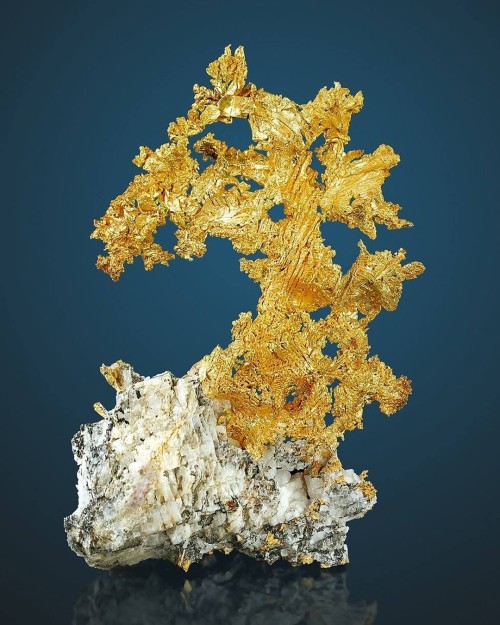
Gold | #Geology #GeologyPage #Minerals #usa
Locality: Eagle’s Nest Mine, Placer Co., California, USA
Size: 9 x 6.1 x 1.8 cm
Photo Copyright © Anton Watzl Minerals
Geology Page www.geologypage.com — view on Instagram https://scontent-iad3-2.cdninstagram.com/v/t51.2885-15/241701518_397503718379467_3401054776149613851_n.jpg?_nc_cat=111&ccb=1-5&_nc_sid=8ae9d6&_nc_ohc=wAvIbpLfPz8AX-dtOaF&_nc_ht=scontent-iad3-2.cdninstagram.com&edm=ANo9K5cEAAAA&oh=65ffb23e4a191f038c3511d14c41803d&oe=61421C8F

Great Basin National Park in Nevada is one of the darkest spots in the United States. What better time to appreciate this park’s clear night sky, then on International Day of Clean Air? Good air quality coupled with a lack of light pollution give visitors majestic starry views of Wheeler Peak. On clear, moonless nights at Great Basin, thousands of stars, numerous planets, star clusters, meteors, man-made satellites, the Andromeda Galaxy, and the Milky Way can be seen with the naked eye. The area boasts some of the darkest night skies left in the country. Low humidity, good air quality, and minimal light pollution, combined with high elevation, create a unique window to the universe. Photo by John Vermette (sharetheexperience.org). Photo description: A bright Milky Way and night sky filled with stars light up the mountains below.







russia’s lake baikal - the world’s oldest, largest (by volume) and deepest freshwater lake - freezes over for half the year, creating clear, turquoise shards of ice. (photos x, x x, x, x, x)
there are a lot of ai tropes. i chose the six that i love most, and i've turned them into a quiz.
ten questions, six results. no pop culture.
Decoding Nebulae
We can agree that nebulae are some of the most majestic-looking objects in the universe. But what are they exactly? Nebulae are giant clouds of gas and dust in space. They’re commonly associated with two parts of the life cycle of stars: First, they can be nurseries forming new baby stars. Second, expanding clouds of gas and dust can mark where stars have died.

Not all nebulae are alike, and their different appearances tell us what's happening around them. Since not all nebulae emit light of their own, there are different ways that the clouds of gas and dust reveal themselves. Some nebulae scatter the light of stars hiding in or near them. These are called reflection nebulae and are a bit like seeing a street lamp illuminate the fog around it.

In another type, called emission nebulae, stars heat up the clouds of gas, whose chemicals respond by glowing in different colors. Think of it like a neon sign hanging in a shop window!

Finally there are nebulae with dust so thick that we’re unable to see the visible light from young stars shine through it. These are called dark nebulae.

Our missions help us see nebulae and identify the different elements that oftentimes light them up.
The Hubble Space Telescope is able to observe the cosmos in multiple wavelengths of light, ranging from ultraviolet, visible, and near-infrared. Hubble peered at the iconic Eagle Nebula in visible and infrared light, revealing these grand spires of dust and countless stars within and around them.

The Chandra X-ray Observatory studies the universe in X-ray light! The spacecraft is helping scientists see features within nebulae that might otherwise be hidden by gas and dust when viewed in longer wavelengths like visible and infrared light. In the Crab Nebula, Chandra sees high-energy X-rays from a pulsar (a type of rapidly spinning neutron star, which is the crushed, city-sized core of a star that exploded as a supernova).

The James Webb Space Telescope will primarily observe the infrared universe. With Webb, scientists will peer deep into clouds of dust and gas to study how stars and planetary systems form.

The Spitzer Space Telescope studied the cosmos for over 16 years before retiring in 2020. With the help of its detectors, Spitzer revealed unknown materials hiding in nebulae — like oddly-shaped molecules and soot-like materials, which were found in the California Nebula.

Studying nebulae helps scientists understand the life cycle of stars. Did you know our Sun got its start in a stellar nursery? Over 4.5 billion years ago, some gas and dust in a nebula clumped together due to gravity, and a baby Sun was born. The process to form a baby star itself can take a million years or more!

After billions more years, our Sun will eventually puff into a huge red giant star before leaving behind a beautiful planetary nebula (so-called because astronomers looking through early telescopes thought they resembled planets), along with a small, dense object called a white dwarf that will cool down very slowly. In fact, we don’t think the universe is old enough yet for any white dwarfs to have cooled down completely.
Since the Sun will live so much longer than us, scientists can't observe its whole life cycle directly ... but they can study tons of other stars and nebulae at different phases of their lives and draw conclusions about where our Sun came from and where it's headed. While studying nebulae, we’re seeing the past, present, and future of our Sun and trillions of others like it in the cosmos.

To keep up with the most recent cosmic news, follow NASA Universe on Twitter and Facebook.
Make sure to follow us on Tumblr for your regular dose of space.
from Asimov’s ‘Nightfall’
Here’s a great explanation of language usage in sci-fi literature for all those who cannot keep their nit-picking to themselves:
Kalgash is an alien world and it is not our intention to have you think that it is identical to Earth, even though we depict its people as speaking a language that you can understand, and using terms that are familiar to you. Those words should be understood as mere equivalents of alien terms-that is, a conventional set of equivalents of the same sort that a writer of novels uses when he has foreign characters speaking with each other in their own language but nevertheless transcribes their words in the language of the reader. So when the people of Kalgash speak of “miles,” or “hands,” or “cars,” or “computers,” they mean their own units of distance, their own grasping-organs, their own ground-transportation devices, their own information-processing machines, etc. The computers used on Kalgash are not necessarily compatible with the ones used in New York or London or Stockholm, and the “mile” that we use in this book is not necessarily the American unit of 5,280 feet. But it seemed simpler and more desirable to use these familiar terms in describing events on this wholly alien world than it would have been to invent a long series of wholly Kalgashian terms.
In other words, we could have told you that one of our characters paused to strap on his quonglishes before setting out on a walk of seven vorks along the main gleebish of his native znoob, and everything might have seemed ever so much more thoroughly alien. But it would also have been ever so much more difficult to make sense out of what we were saying, and that did not seem useful. The essence of this story doesn’t lie in the quantity of bizarre terms we might have invented; it lies, rather, in the reaction of a group of people somewhat like ourselves, living on a world that is somewhat like ours in all but one highly significant detail, as they react to a challenging situation that is completely different from anything the people of Earth have ever had to deal with. Under the circumstances, it seemed to us better to tell you that someone put on his hiking boots before setting out on a seven-mile walk than to clutter the book with quonglishes, vorks, and gleebishes.
If you prefer, you can imagine that the text reads “vorks” wherever it says “miles,” “gliizbiiz” wherever it says “hours,” and “sleshtraps” where it says “eyes.” Or you can make up your own terms. Vorks or miles, it will make no difference when the Stars come out.
-I.A.
-R.S.

NGC 4590 (M68) Globular Cluster
33,000 light years from the Earth, this globular cluster has an odd orbit around our galaxy, orbiting like a comet does around a star, and moving away as far as 100,000 light years from the centre.
It’s theorised that it’s likely a captured cluster, and appears to be undergoing core collapse, where the gravitational influence of the entire cluster bares down at the centre and causes black holes and dense stars to slowly migrate towards the centre, much as our own galaxy has the same mechanism creating the central black hole.

MESSIER 56 The NASA/ESA Hubble Space Telescope captured this image of Messier 56 (also known as M 56 or NGC 6779), located about 33,000 light years away from Earth in the constellation of Lyra (The Lyre). The stars in the globular cluster are tightly bound together by gravity.
Keep reading

Say hello to globular cluster 47 Tucanae 👋
This glittery spray of ancient stars is about 16,700 light-years away from Earth toward the constellation Tucana. Globular clusters like this one are isolated star cities, home to hundreds of thousands of stars that are held together by their mutual gravity. And like the fast pace of cities, there’s plenty of action in these stellar metropolises. The stars are in constant motion, orbiting around the cluster’s center.
Past observations have shown that the heavyweight stars tend to crowd into the “downtown” core area, while lightweight stars reside in the less populated suburbs. But as heavyweight stars age, they rapidly lose mass, cool down and shut off their nuclear furnaces. After the purge, only the stars’ bright, superhot cores – called white dwarfs – remain. This weight loss program causes the now lighter-weight white dwarfs to be nudged out of the downtown area through gravitational interactions with heftier stars.
Until these Hubble observations, astronomers had never seen the dynamic conveyor belt in action. The Hubble results reveal young white dwarfs amid their leisurely 40-million-year exodus from the bustling center of the cluster.
Make sure to follow us on Tumblr for your regular dose of space: http://nasa.tumblr.com.

The Himalayan plateau, as seen from the ISS by europeanspaceagency
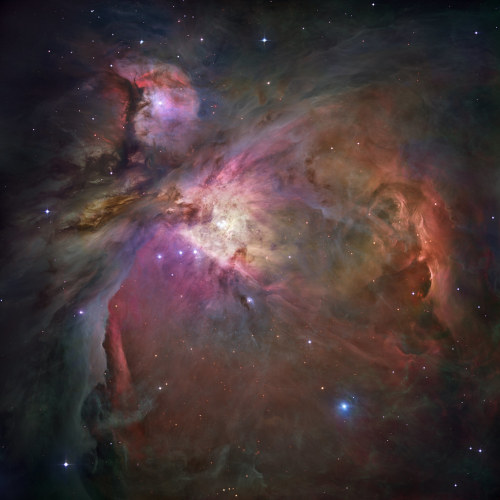
M42 by NASA Hubble
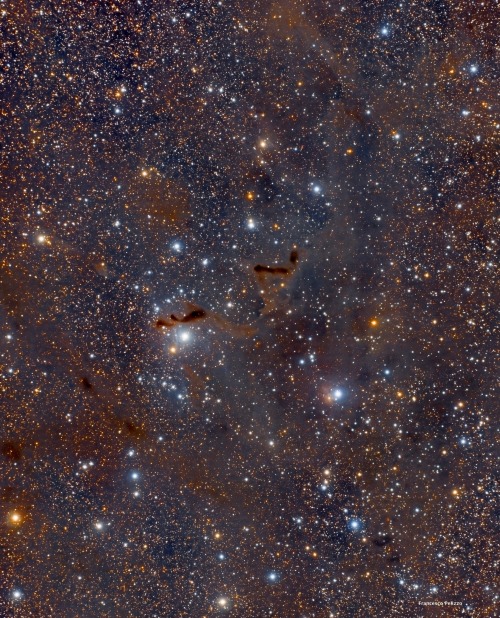
A Giving Hand, vdB9 // DocRx

Comet meets cluster by europeanspaceagency
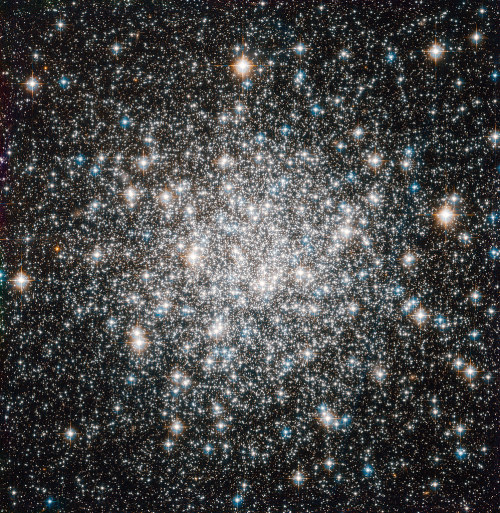
A ten billion-year stellar dance by europeanspaceagency

Hubble Observes Infant Stars in Nearby Galaxy by NASA Hubble
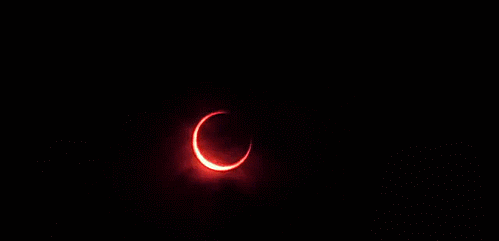

Hubble Anniversary Image Captures Roiling Heart of Vast Stellar Nursery by NASA Hubble
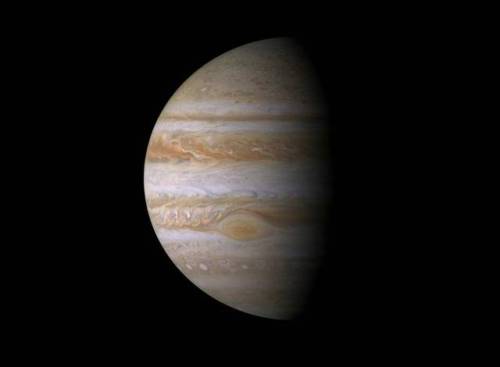
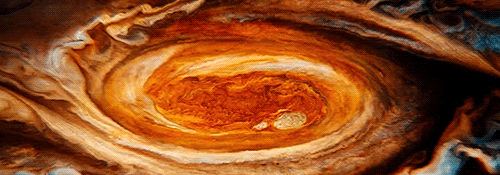
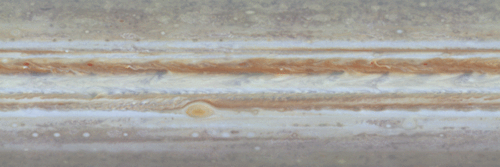
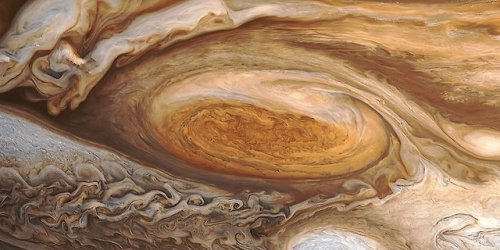
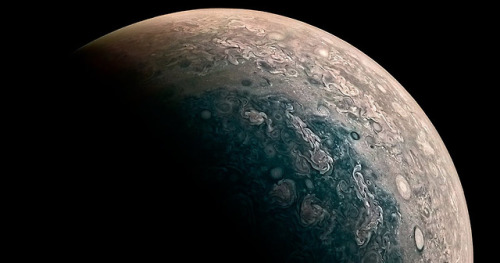
Jupiter is perpetually covered with clouds composed of ammonia crystals and possibly ammonium hydrosulfide. The clouds are located in the tropopause and are arranged into bands of different latitudes, known as tropical regions. These are sub-divided into lighter-hued zones and darker belts. The interactions of these conflicting circulation patterns cause storms and turbulence. Wind speeds of 100 m/s (360 km/h) are common in zonal jets. The zones have been observed to vary in width, color and intensity from year to year, but they have remained sufficiently stable for scientists to give them identifying designations.
The cloud layer is only about 50 km (31 mi) deep, and consists of at least two decks of clouds: a thick lower deck and a thin clearer region. There may also be a thin layer of water clouds underlying the ammonia layer. Supporting the idea of water clouds are the flashes of lightning detected in the atmosphere of Jupiter. These electrical discharges can be up to a thousand times as powerful as lightning on Earth. The water clouds are assumed to generate thunderstorms in the same way as terrestrial thunderstorms, driven by the heat rising from the interior.
source





